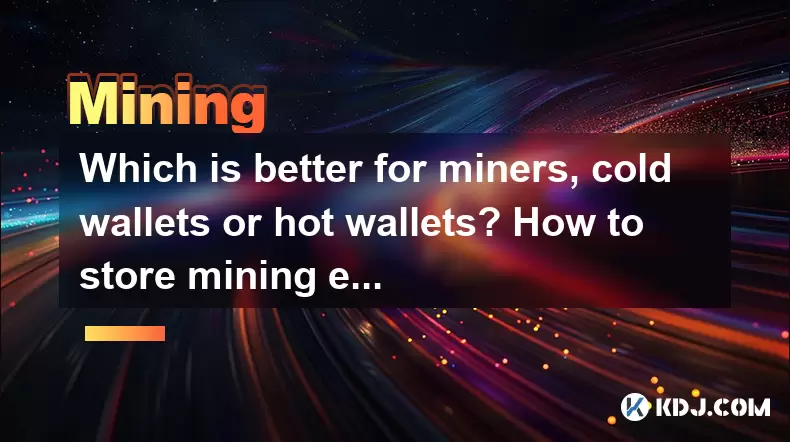-
 Bitcoin
Bitcoin $117500
-0.66% -
 Ethereum
Ethereum $3760
-1.24% -
 XRP
XRP $3.087
-2.54% -
 Tether USDt
Tether USDt $0.9999
-0.01% -
 BNB
BNB $803.6
-4.03% -
 Solana
Solana $180.3
-4.15% -
 USDC
USDC $0.9998
-0.01% -
 Dogecoin
Dogecoin $0.2218
-4.92% -
 TRON
TRON $0.3366
3.71% -
 Cardano
Cardano $0.7785
-3.73% -
 Hyperliquid
Hyperliquid $42.90
-4.75% -
 Sui
Sui $3.797
-7.45% -
 Stellar
Stellar $0.4165
-2.32% -
 Chainlink
Chainlink $17.65
-4.17% -
 Bitcoin Cash
Bitcoin Cash $561.0
-3.86% -
 Hedera
Hedera $0.2611
-4.54% -
 Avalanche
Avalanche $24.33
-7.02% -
 UNUS SED LEO
UNUS SED LEO $8.972
0.06% -
 Litecoin
Litecoin $107.6
-2.79% -
 Toncoin
Toncoin $3.254
-1.84% -
 Shiba Inu
Shiba Inu $0.00001306
-4.69% -
 Ethena USDe
Ethena USDe $1.001
0.00% -
 Uniswap
Uniswap $10.10
-4.83% -
 Polkadot
Polkadot $3.902
-4.63% -
 Monero
Monero $315.1
-2.57% -
 Dai
Dai $1.000
0.02% -
 Bitget Token
Bitget Token $4.499
-2.53% -
 Pepe
Pepe $0.00001145
-7.38% -
 Cronos
Cronos $0.1479
6.07% -
 Aave
Aave $281.3
-4.07%
Which is better for miners, cold wallets or hot wallets? How to store mining earnings safely?
Miners should use cold wallets for secure long-term storage of earnings and hot wallets for daily transactions, balancing security with accessibility.
May 11, 2025 at 07:14 pm

When it comes to mining cryptocurrencies, one of the critical decisions miners face is how to securely store their earnings. The debate often centers around whether to use cold wallets or hot wallets. Each type of wallet has its own advantages and disadvantages, and the choice depends on various factors including security needs, accessibility, and personal preferences.
Understanding Cold Wallets
Cold wallets, also known as offline wallets, are storage devices that are not connected to the internet. This disconnection from the internet provides a higher level of security, making them less susceptible to hacking attempts. Common types of cold wallets include hardware wallets and paper wallets.
- Hardware Wallets: These are physical devices that store private keys securely. Examples include Ledger Nano S and Trezor. They are user-friendly and provide robust security measures such as PIN codes and recovery phrases.
- Paper Wallets: These are physical documents that contain the public and private keys. They are cost-effective but require careful handling to prevent physical damage or loss.
Understanding Hot Wallets
Hot wallets are connected to the internet, making them more convenient for frequent transactions. However, this connectivity also increases their vulnerability to cyber attacks. Types of hot wallets include software wallets, mobile wallets, and web wallets.
- Software Wallets: These are applications installed on a computer or laptop. Examples include Electrum and Exodus. They offer a good balance between security and convenience.
- Mobile Wallets: These are apps on smartphones, such as Trust Wallet and Coinbase Wallet. They are ideal for those who need to access their funds on the go.
- Web Wallets: These are online services accessed through a web browser, like MetaMask. They are the most convenient but also the least secure due to their constant internet connection.
Security Comparison: Cold vs. Hot Wallets
When it comes to security, cold wallets generally offer a higher level of protection. Since they are not connected to the internet, they are immune to online hacking attempts. Hardware wallets, in particular, provide advanced security features such as encryption and two-factor authentication, making them the preferred choice for storing large amounts of cryptocurrency.
On the other hand, hot wallets are more susceptible to cyber threats due to their online nature. However, they offer the advantage of quick and easy access to funds, which can be crucial for miners who need to frequently move their earnings.
Accessibility and Convenience
Accessibility and convenience are key factors for miners, especially those who need to manage their mining earnings regularly. Hot wallets excel in this area, as they allow instant access to funds and facilitate quick transactions. This makes them suitable for miners who need to pay for mining pool fees or convert their earnings into other cryptocurrencies.
In contrast, cold wallets require more effort to access funds. For instance, using a hardware wallet involves physically connecting the device to a computer and entering a PIN. While this adds an extra layer of security, it can be cumbersome for those who need frequent access to their earnings.
Best Practices for Storing Mining Earnings
To store mining earnings safely, miners should consider a combination of both cold and hot wallets. Here’s a detailed approach:
Use a Cold Wallet for Long-Term Storage: Store the majority of your mining earnings in a hardware wallet. This ensures that your funds are protected from online threats. To set up a hardware wallet:
- Purchase a reputable hardware wallet such as Ledger or Trezor.
- Follow the manufacturer's instructions to set up the device, including creating a PIN and a recovery phrase.
- Transfer your mining earnings to the wallet address provided by the hardware wallet.
Use a Hot Wallet for Daily Transactions: Keep a small amount of cryptocurrency in a software or mobile wallet for daily transactions. This allows you to manage your mining pool fees and other expenses without compromising the security of your main stash. To set up a hot wallet:
- Choose a reliable software or mobile wallet that supports your mined cryptocurrency.
- Download and install the wallet application on your device.
- Follow the setup instructions, including creating a password and securing your private keys.
- Transfer a small amount of your mining earnings to the hot wallet address.
Regularly Backup Your Wallets: Both cold and hot wallets should be backed up regularly to prevent loss of funds. For cold wallets, securely store your recovery phrase in multiple locations. For hot wallets, regularly export and save your private keys or recovery phrases.
Stay Informed and Vigilant: Keep up-to-date with the latest security practices and news in the cryptocurrency space. Be wary of phishing attempts and never share your private keys or recovery phrases with anyone.
Additional Security Measures
To further enhance the security of your mining earnings, consider the following additional measures:
- Multi-Signature Wallets: Use multi-signature wallets that require multiple private keys to authorize a transaction. This adds an extra layer of security and can be particularly useful for managing large amounts of cryptocurrency.
- Segregated Witness (SegWit): If you’re mining Bitcoin, consider using a wallet that supports SegWit. This can help reduce transaction fees and improve the security of your transactions.
- Cold Storage Solutions: For extremely large amounts of cryptocurrency, consider using professional cold storage solutions offered by reputable companies. These services often provide advanced security features and insurance against theft.
Frequently Asked Questions
Q: Can I use a single wallet for both mining earnings and daily transactions?
A: While it is technically possible, it is not recommended. Using a single wallet for both purposes increases the risk of losing your entire stash to a single security breach. It's safer to use a cold wallet for long-term storage and a hot wallet for daily transactions.
Q: How often should I transfer my mining earnings from a hot wallet to a cold wallet?
A: This depends on your mining frequency and the amount you mine. As a general rule, transfer your earnings to a cold wallet weekly or when you accumulate a significant amount that you don’t need for immediate use.
Q: Are there any fees associated with using cold and hot wallets?
A: Yes, there can be fees associated with both types of wallets. Hardware wallets have an initial purchase cost, while some software and mobile wallets may charge transaction fees. Always review the fee structure of any wallet before using it.
Q: What should I do if I lose access to my cold wallet?
A: If you lose access to your cold wallet, use your recovery phrase to restore your wallet on a new device. Make sure you have securely stored your recovery phrase in multiple locations to prevent permanent loss of funds.
Disclaimer:info@kdj.com
The information provided is not trading advice. kdj.com does not assume any responsibility for any investments made based on the information provided in this article. Cryptocurrencies are highly volatile and it is highly recommended that you invest with caution after thorough research!
If you believe that the content used on this website infringes your copyright, please contact us immediately (info@kdj.com) and we will delete it promptly.
- Bitcoin Price Drop: Navigating the Dip with Corporate Strategies
- 2025-07-30 07:30:12
- BNB's Bullish Cycle: ChatGPT Weighs In on the Future
- 2025-07-30 06:50:12
- XRP's Wild Ride: Open Interest, Price Crash Fears, and What's Next
- 2025-07-30 07:50:12
- SEC Greenlights In-Kind Creations: A Game Changer for Bitcoin ETPs?
- 2025-07-30 07:50:12
- Arbitrum (ARB) Price Prediction: Navigating the Ups and Downs of the Best ETH Eco
- 2025-07-30 06:50:12
- Ethereum, Ruvi AI, Presale: The Next Big Thing in Crypto?
- 2025-07-30 07:30:12
Related knowledge

What was the highest APY for IRON mining?
Jul 23,2025 at 05:14am
Understanding IRON Token and Its Mining MechanismThe IRON token is a stablecoin that operates within the Iron Finance ecosystem, primarily on blockcha...

What is impermanent loss in IRON pools?
Jul 23,2025 at 09:00am
Understanding Impermanent Loss in the Context of IRON PoolsImpermanent loss is a phenomenon that affects liquidity providers in decentralized finance ...

How to claim rewards from IRON mining?
Jul 23,2025 at 02:21pm
Understanding IRON Mining and Reward MechanismsIRON Finance operated as a decentralized finance (DeFi) protocol on the Polygon and Binance Smart Chain...

How to claim rewards from IRON mining?
Jul 29,2025 at 05:07am
Understanding IRON Mining and Reward MechanismIRON is a dual-token system designed to stabilize the value of a synthetic asset through a combination o...

IRON mining tutorial for beginners
Jul 27,2025 at 12:01am
What Is IRON and How Does It Work in the Cryptocurrency Ecosystem?IRON is a cryptocurrency token that operates on the Binance Smart Chain (BSC) and is...

How to calculate APY for IRON mining?
Jul 28,2025 at 09:49am
Understanding APY in the Context of IRON Token MiningWhen engaging in IRON token mining within decentralized finance (DeFi) platforms, Annual Percenta...

What was the highest APY for IRON mining?
Jul 23,2025 at 05:14am
Understanding IRON Token and Its Mining MechanismThe IRON token is a stablecoin that operates within the Iron Finance ecosystem, primarily on blockcha...

What is impermanent loss in IRON pools?
Jul 23,2025 at 09:00am
Understanding Impermanent Loss in the Context of IRON PoolsImpermanent loss is a phenomenon that affects liquidity providers in decentralized finance ...

How to claim rewards from IRON mining?
Jul 23,2025 at 02:21pm
Understanding IRON Mining and Reward MechanismsIRON Finance operated as a decentralized finance (DeFi) protocol on the Polygon and Binance Smart Chain...

How to claim rewards from IRON mining?
Jul 29,2025 at 05:07am
Understanding IRON Mining and Reward MechanismIRON is a dual-token system designed to stabilize the value of a synthetic asset through a combination o...

IRON mining tutorial for beginners
Jul 27,2025 at 12:01am
What Is IRON and How Does It Work in the Cryptocurrency Ecosystem?IRON is a cryptocurrency token that operates on the Binance Smart Chain (BSC) and is...

How to calculate APY for IRON mining?
Jul 28,2025 at 09:49am
Understanding APY in the Context of IRON Token MiningWhen engaging in IRON token mining within decentralized finance (DeFi) platforms, Annual Percenta...
See all articles

























































































